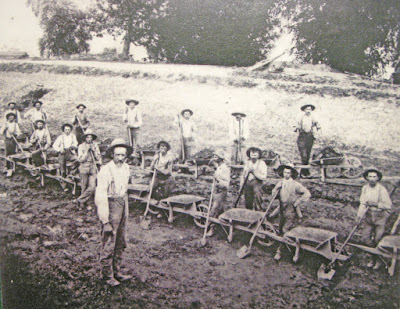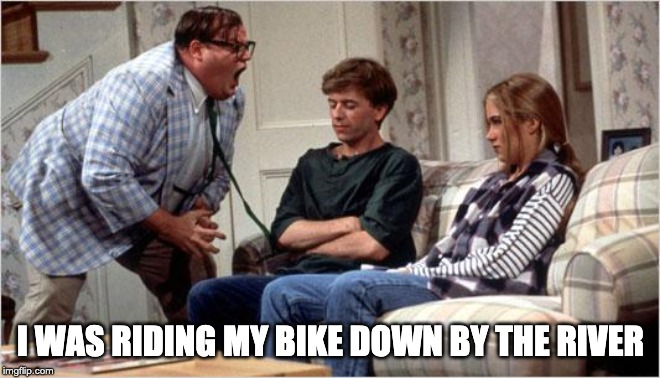Take me away
Down by the river
Now that we’ve presented the songs that make up the 2019 inductees into the 2 OR 3 LINES “GOLDEN DECADE” HIT SINGLES HALL OF FAME, it’s time to announce the 2019 inductees into the 2 OR 3 LINES “GOLDEN DECADE” ALBUM TRACKS HALL OF FAME.
But before we clear the plates from our first course and serve the second one, perhaps a spoonful of palate-cleansing sorbet is in order.
 |
| Another day, another bike ride |
* * * * *
The Chesapeake and Ohio Canal – which is usually referred to as the C&O Canal – follows the course of the Potomac River from Washington, DC, to Cumberland, Maryland.
 |
| At mile 140 of the C&O Canal |
The C&O is now a national historical park, and the towpath where the mules who towed the canal boats walked has become a popular trail for hikers and bikers.
I’ve ridden about three-fourths of the length of the canal, and plan to ride the remaining one-fourth by the end of the summer. The towpath is a little rougher than I would like it to be, and it can be pretty wet and muddy after thunderstorms – not to mention buggy.
But it’s uncrowded and offers many lovely views of the Potomac River, and you pass through some interesting little towns and villages.
* * * * *
Earlier this week, I drove to Little Orleans, Maryland, a tiny village in distant western Maryland, to take a ride along a stretch of the C&O that was new to me.
In 1839, a hundred or so armed Irish immigrants who were helping to dig the canal rioted and attacked a German work camp near Little Orleans, killing one worker and injuring many others. A local priest who witnessed the mayhem wrote to the C&O’s chief engineer that “were I superstitious I would really believe [the Irish rioters] are incarnate devils.”
 |
| Irish canal diggers |
* * * * *
The highlight of my trip to Little Orleans was my visit to Bill’s Place, a bike-friendly combination restaurant/bar/grocery store that’s located in a rustic building just off the canal towpath:
 |
The Bill’s Place menu is surprisingly lengthy, but I kept it simple and ordered a ham and cheese sandwich, potato chips, and a Dr. Pepper when I stopped for lunch.
 |
* * * * *
There were many noteworthy things in Bill’s Place but the most remarkable aspect of the joint was its ceiling, every square inch of which was covered with signed dollar bills:
Here's a closer look at a few of these bills:
Based on my quick-and-dirty count, I’d say the overhead array of Washingtons was about 50 bills wide by 300 bills long.
 |
 |
In other words, there was roughly $15,000 pinned to the ceiling of Bill’s Place.
* * * * *
Neil Young wrote what are arguably his three best songs – “Cinnamon Girl,” “Cowgirl in the Sand,” and “Down by the River” – when he was ill, half out of his mind with a 103-degree fever.
 |
| Neil Young in 1969 |
I'd like to sing you a song about a guy who had a lot of trouble controlling himself. He let the dark side come through a little too bright.
One afternoon he took a little stroll down thru a field and thru a forest, until he could hear the water running along there. And he met his woman down there. And he told her she’d been cheating on him one too many times. And he reached down in his pocket and he pulled a little revolver out. Said, “Honey I hate to do this, but you pushed me too far.”
By the time he got back to town he knew he had to answer to somebody pretty quick. He went back to his house and he sat down on his front porch. About two hours later the sheriff’s car pulled up out front. It started sinking in on him what he’d done. The sheriff walked up the sidewalk and said, “Come with me son, I want to ask you a few questions.”
At other times, he has denied that the song is about a murder.
Click here to hear “Down by the River.”
Click on the link below to buy the song from Amazon:




No comments:
Post a Comment